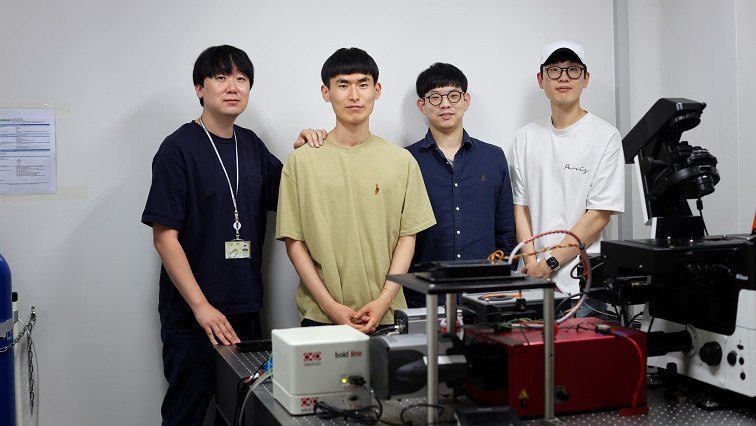DGIST (President Kuk Yang) announced that a research team led by Professor Seo Dae-ha of the Department of Physics and Chemistry developed a dark field super-resolution microscope with excellent spatial and temporal resolution and observed the dynamic behavior of endosomes during intracellular transport with it. Long observation of living cells using the microscope is expected to solve difficult biological problems that were not possible to solve before.
Endosomes are fluid sacs surrounded by biological membranes formed in the cytoplasm through endocytosis. They are transported in appropriate time and to an appropriate place by motor proteins that move along intracellular road networks (microtubules). In this process, the analysis of endosome movement and three-dimensional rotation can be an important key to understanding the molecular biology of intracellular transport.
The research team of Professor Seo Dae-ha of the Department of Physics and Chemistry has developed a super-resolution microscope that places two nanoprobes in the endosomes, distinguishes them, and observes them for a long time as a method to observe the translational and rotational movements of endosomes in real time. Through a series of processes, such as using gold nanoparticles without photobleaching, quickly rotating and radiating linearly polarized light, and reinterpreting the plane-dependent scattering signal with a super-resolution algorithm, a super-resolution image is obtained in a short time (within one second), and a video was recorded for a long time through continuous recording.
Using this, the team observed the three-dimensional dynamic behavior of endosomes, analzyed the translational and rotational movements occurring during transport, and derived biological rotational physical quantities that could not be measured previously and their statistical distributions.
“Through the development of this imaging technology, we were able to observe the intracellular transport process with a resolution of several tens of nanometers and directly confirm the 'tug of war model' of endosomes,” said Professor Seo Dae-ha Seo of the Department of Physics and Chemistry at DGIST. He added, “It is expected that it will contribute to revealing life phenomena and will be applied to precision medicine for diagnosing diseases.”
Meanwhile, this research was carried out with the support of the Ministry of Science and ICT and the National Research Foundation's Leading Researcher Support Project, Leading Research Center, and DGIST's Science and Technology Leading Basic Research (HRHR+) and Grand Challenge Research Innovation Project (D-GRIP). The research results were published online on May 19, 2022 in JACS Au, an international academic journal, and was selected as a supplementary cover of the magazine on July 25.
Read the original article on Daegu Gyeongbuk Institute of Science and Technology (DGIST).







